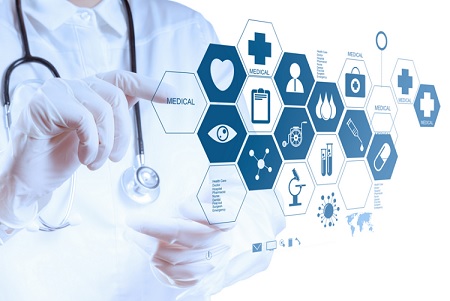We honor and show gratitude to all our veterans for their extraordinary service, courage and sacrifice, today and every day. We Love Our Veterans. Use discount code: Vet19 to purchase any amount of single supplement items from our official website: www.stemcellworx.com
Archive for the ‘healthcare advancements’ Category
Happy Veterans Day. We Love Our Veterans.
Monday, November 11th, 2024Healthcare – What’s On The Horizon In 2016
Monday, January 11th, 2016A new paradigm is emerging in the world of healthcare.
These are very exciting times for the healthcare and life science sectors as clinical trials and research demonstrate understanding of aging and disease at the cellular and genetic level. This understanding is enabling new therapies and treatments to be backed and then developed like never before.
Biomedical advancements are at the forefront of this paradigm and they are set to transform global health. These developments are enabling early diagnosis and therapeutic intervention for chronic and killer diseases including autoimmune diseases, blood disorders and cancer.
The top six scientific and healthcare developments to be tracked in 2016 are:
1. Immuno-oncology
It is one of the most promising fields of science being explored by scientists to help develop customized solutions. Some spectacular advancements were made in this area in 2015, with a market opportunity of $40 billion forecast by 2025, (source: Leerink Partners).
PD-1 (programmed death-1) and PDL-1 (programmed death ligand-1) targeting antibodies and Chimeric antigen receptor T-cells (CART), have demonstrated how treatments and technology can be leveraged for developing ground-breaking therapies in immuno-oncology. The US Food and Drug Administration (USFDA) recently approved a drug that relies on a genetically-engineered version of the herpes virus to kill cancer cells and stimulate immune response against malignant tumors in skin cancer patients. Several other immune-stimulating viral therapies are also being evaluated with the hope that they can be developed further. One example is a genetically-modified polio virus to fight brain cancer and the re-engineering of the common cold virus in the hope that it will treat a form of bladder cancer.
2. Stem Cell Therapy
Stem cell therapy is providing new hope in not only curing a number of debilitating diseases but also building organs in the Laboratory. A number of scaffolds have already been built and engineered and successfully trialed in patients.
Scientists believe stem cell therapy is key to managing cancer, heart diseases, diabetes, Parkinson’s disease and many more diseases in the near future. Over 150 diseases are being stabilized and in some cases cured using stem cell therapies.
Healthy stem cells have the remarkable potential to develop into many different cell types within the body throughout one’s entire lifetime. They serve as an internal repair system, dividing to replenish and rejuvenate other cells as long as the person or animal is alive.
Just recently the Therapeutic Goods Administration (TGA) in Australia gave its first go-ahead to human studies for a revolutionary stem cell therapy aimed at halting/reversing the progression of Parkinson’s disease, which affects up to 10 million people worldwide.
Scientists in Australia have also achieved a medical breakthrough to enable stem cells to form different cell types found in the kidney. Initially it was thought only stem cells could rejuvenate the type of cells they were sourced from. However, more recent science (in the last decade) shows that in the right environment and with the help of specialized activators and proteins, stem cells have far greater repair and renewal capabilities throughout the entire body.
3. 3D Printing
A Bengaluru-based tissue engineering start-up has made India’s first artificial human liver tissue with the help of 3D printing technology, using 10 million liver cells. This is a milestone that showcases the tremendous potential of 3D printing technology in organ development. It has the potential to save many lives.
3D printing is already changing lives. People who have had countless hip replacements because the standard mold doesn’t fit are now benefiting from 3D printing molds that fit their joint perfectly, putting an end to endless correction surgeries.
4. Biomarkers and Companion Diagnostics
Today, biomarkers are providing a wealth of biological data. These biomarkers are predicting drug failures before expensive clinical trials are carried out. They are also allowing scientists to identify patient pools a lot sooner in terms of who is likely to respond favorably to a particular drug.
We already have cancer drugs for patients with specific genetic mutations. This has led to the emergence of companion diagnostics, which screens patients for biomarkers that gauge the safety and efficacy of a particular treatment. Recently, the USFDA approved the first companion diagnostic to detect a protein associated with lung cancer while approving Merck’s Keytruda drug for the disease. The companion diagnostic will enable doctors to determine whether patients have high enough levels of the PD-L1 biomarker for Keytruda in order for it be effective. Now, more sophisticated companion diagnostics are being developed to assess patients for multiple biomarkers related to multiple drugs.
5. Genomic Sequencing
Genomics has created a new breed of life scientists and researchers, who look at disease in a very different way. A number of initiatives are underway including the US-based medical geneticist Robert Green’s MedSeq Project which looks at ways in which the profusion of genomics data and other clinical information can be integrated with day-to-day medical practice in order to assist the medical fraternity in determining a specific line of treatment for their patients.
Already, genomic sequencing is being combined with molecular diagnostics, imaging and data analytics to decipher the cellular structure of malignant tumors and develop treatment regimens.
Billionaire Dr. Patrick Soon-Shiong of Los Angeles is turning heads with his unconventional ways of treating cancer. Dr Soon-Shiong has appointed himself to lead his genome revolution. Cancer genome sequencing is not new but what’s different about Soon-Shiong’s project is the scale. He has spent nearly a billion dollars of his own money to build a massive infrastructure, run by super computers, to find every single genetic mutation that could drive cancer.
This is Soon-Shiong’s plan in the future: A patient, anywhere in the world, has his tumor biopsied. The tumor cell’s complete genetic map is then created all the way down to the proteins that are produced. What recently took months can now be done in a day. Soon-Shiong’s ultimate plan is for personalized information for each cancer patient to show up in the palm of his hand ready for the appropriate treatment to be applied, and this concept is not that far off.
6. Biosimilars
The development of biosimilars will provide affordable access to complex biologics in 2016. The first-ever USFDA approval for a biosimilar was granted to Filgrastim in 2015. Encouraging developments in highly regulated markets point to the evolution of abbreviated clinical pathways that will allow speedier entry of biosimilars. With $48 billion worth of patents on a number of blockbuster biologics set to expire soon, the global biosimilars market is poised for rapid growth.
India is well poised to play a significant role in the biosimilars area where companies like Biocon, Dr Reddy’s, Intas, Zydus Cadila and others are engaged in developing high quality biosimilars to provide affordable access to these complex biologics.
Indian patients have had access to some of the biosimilars like Insulins, Analogs, Filgrastim etc. since early 2000s and more recently complex antibodies like Trastuzumab, Rituximab, Adalimumab etc have also been introduced. This early experience with developing biosimilars will pave the way for Indian players to capitalize on this unfolding global opportunity.
Extraordinary Times
We are living in extraordinary times. Science and technology combined is revolutionizing the way healthcare is being provided. Cancer is no longer a death sentence but a manageable chronic disease. We are witnessing the development of innovative therapies like no time in history before.
Clearly, it is time to look out for this new paradigm in global healthcare where the blind will see, the deaf will hear and the paralyzed will walk.







